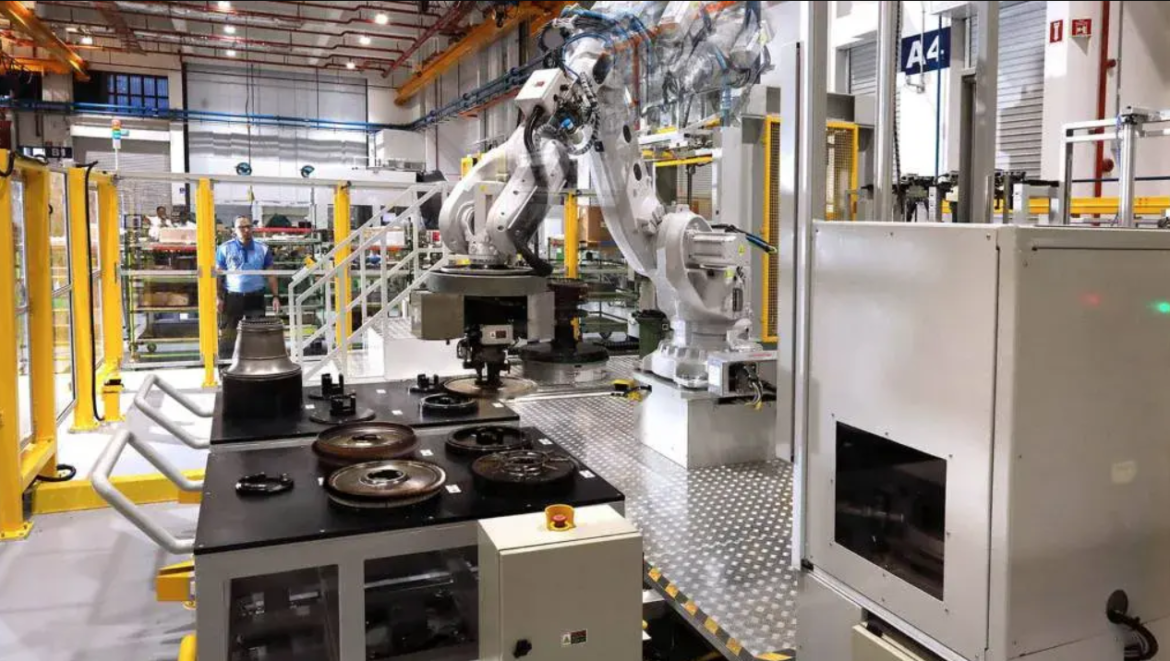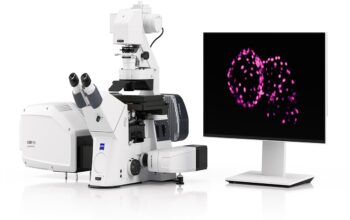Pratt & Whitney’s Eagle Services Asia engine centre in Singapore has significantly reduced the time required to assemble high-pressure compressor rotors for the GTF PW1100G-JM engine, thanks to automation.
A robot named Alfred now performs tasks that were once monotonous and time-consuming, cutting assembly time in half and allowing human operators to focus on more complex tasks.
At 7:30 am, Alfred begins its double shift, preparing rotors by placing them in an industrial oven, cooling them, and transferring them to a hydraulic stacking system. This precise and repetitive task is handled effortlessly by Alfred. “Alfred doesn’t mind the pressure. He’s built for it,” said Gilbert Sim, director of aftermarket operations, Core and technology transformation at Pratt & Whitney, an RTX business.
Alfred was designed to assemble high-pressure compressor rotors for the Airbus A320neo family of aircraft. This initiative is part of Pratt & Whitney’s broader investment in automation, connectivity, and data analytics, often referred to as Industry 4.0. These advancements are now being expanded to Pratt’s maintenance, repair, and overhaul (MRO) facilities. “We’re putting these technologies to work, boosting MRO performance and driving efficiencies across the shopfloor – at an impressive pace,” Sim added.

How Alfred was born
The idea for Alfred came from a technician who wanted to speed up the 14-hour process of assembling an HPC module. By leveraging best practices from Pratt’s production facilities and RTX’s Core operating system, the team at Eagle Services Asia discovered that automating the rotor build could halve the assembly time and free up three operators for more complex tasks like rotor balancing. The project moved quickly from concept in 2021 to a fully operational automated cell in 2023. “We went from a concept in 2021 to design review in 2022 to a fully tested and operational automated cell in 2023,” Sim said. “From start to finish in two and a half years.”
Value of automation
Pratt & Whitney’s use of automation brings several key benefits:
- Safer operations with a lower risk of injury
- Enhanced repeatability and reliability, reducing rework
- Shorter process time and less waste
- Customised fixtures that integrate software with hardware while minimising footprint

Inside Alfred’s day
Alfred’s shift begins when an operator loads hardware into the cell. With the push of a button, Alfred starts its tasks, swapping out tools and handling parts that pose risks of burns and other injuries to human operators. Alfred heats each part, expands the materials for tighter fits, and moves parts to the hydraulic stacking system. The system then presses together the front hub, eight rotors, and a rear hub. “The process of joining them up is just like a Lego process,” Sim explained. “It will stack them, press them, do the necessary heating just to make sure that the temperature increases so that you are able to join the whole eight-stage rotor together.” The process takes about seven hours, leaving Alfred some downtime before the next assembly.
Accelerating automation
Alfred is the latest robot at Pratt & Whitney, but it won’t be the last. A new robot named Athena is set to join Alfred at Eagle Services Asia in 2025. Pratt & Whitney aims to use Eagle Services Asia as a model for other facilities, sharing a standardised playbook to streamline implementation. “We’re putting together a standardised playbook to share with other Pratt & Whitney MRO shops,” Sim said. “This will help them cut down on implementation time and quickly learn from our experience, making their process smoother and faster.”
Sim’s team has also established the Singapore Technology Accelerator and the North America Technology Accelerator in Florida, both serving as “centres of excellence” for aftermarket operations. These accelerators aim to deploy automation to other repetitive processes for the GTF engine, including the engine core and low-pressure compressor module builds. “I use these two technology accelerators as an incubator to work with the businesses to drive idea creation and idea optimisation,” Sim said. “I call it the ‘innovation playground.’”









